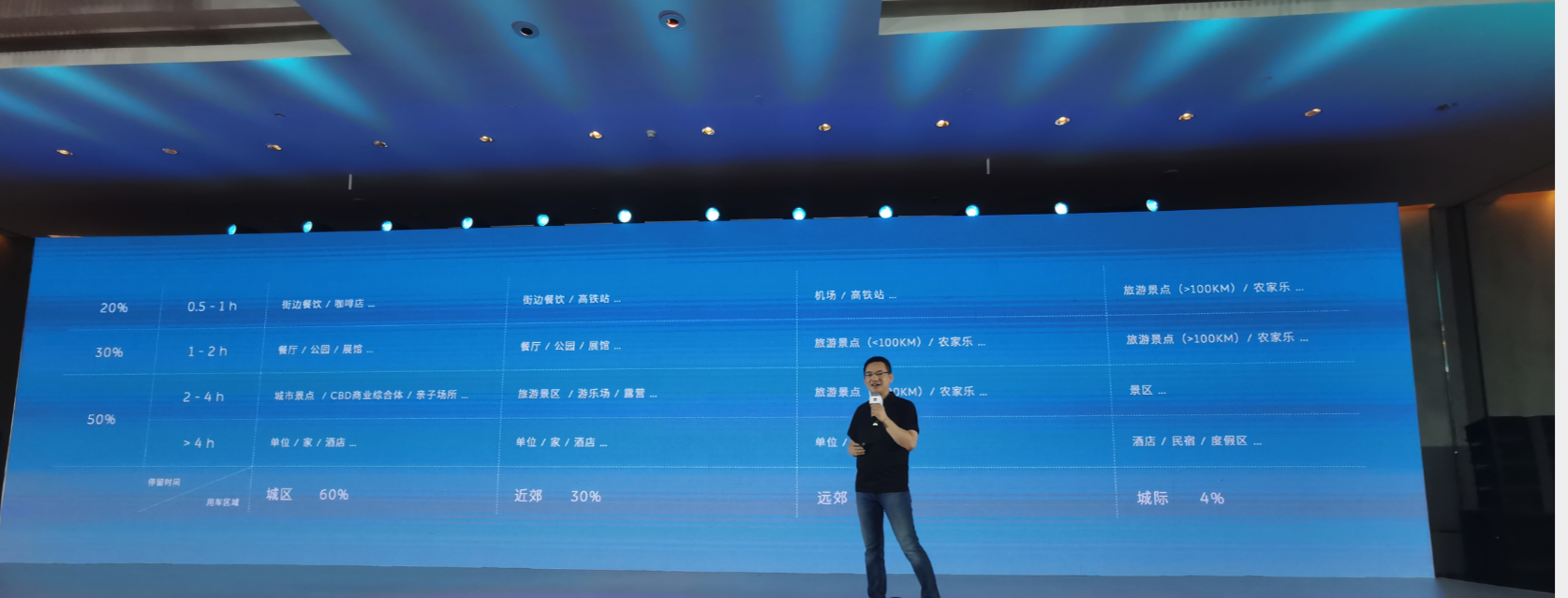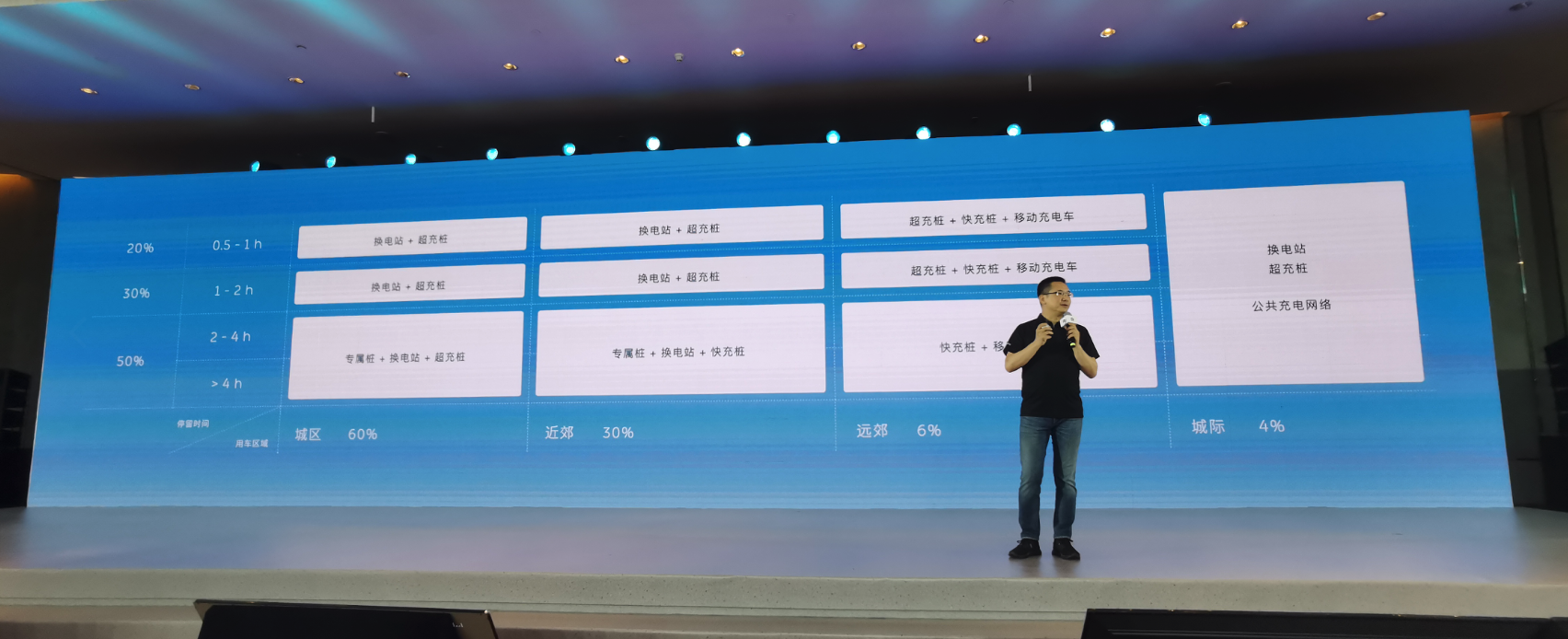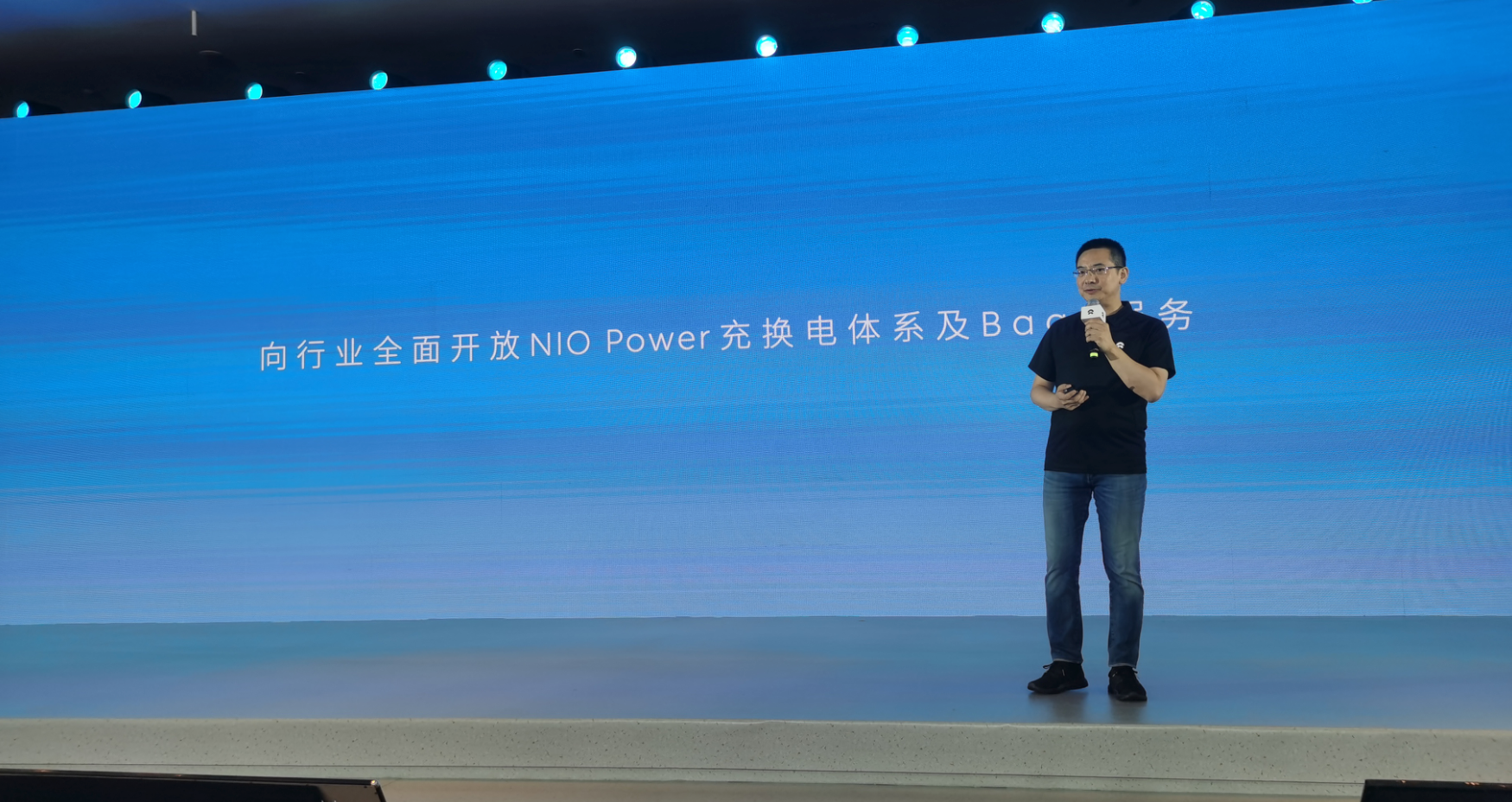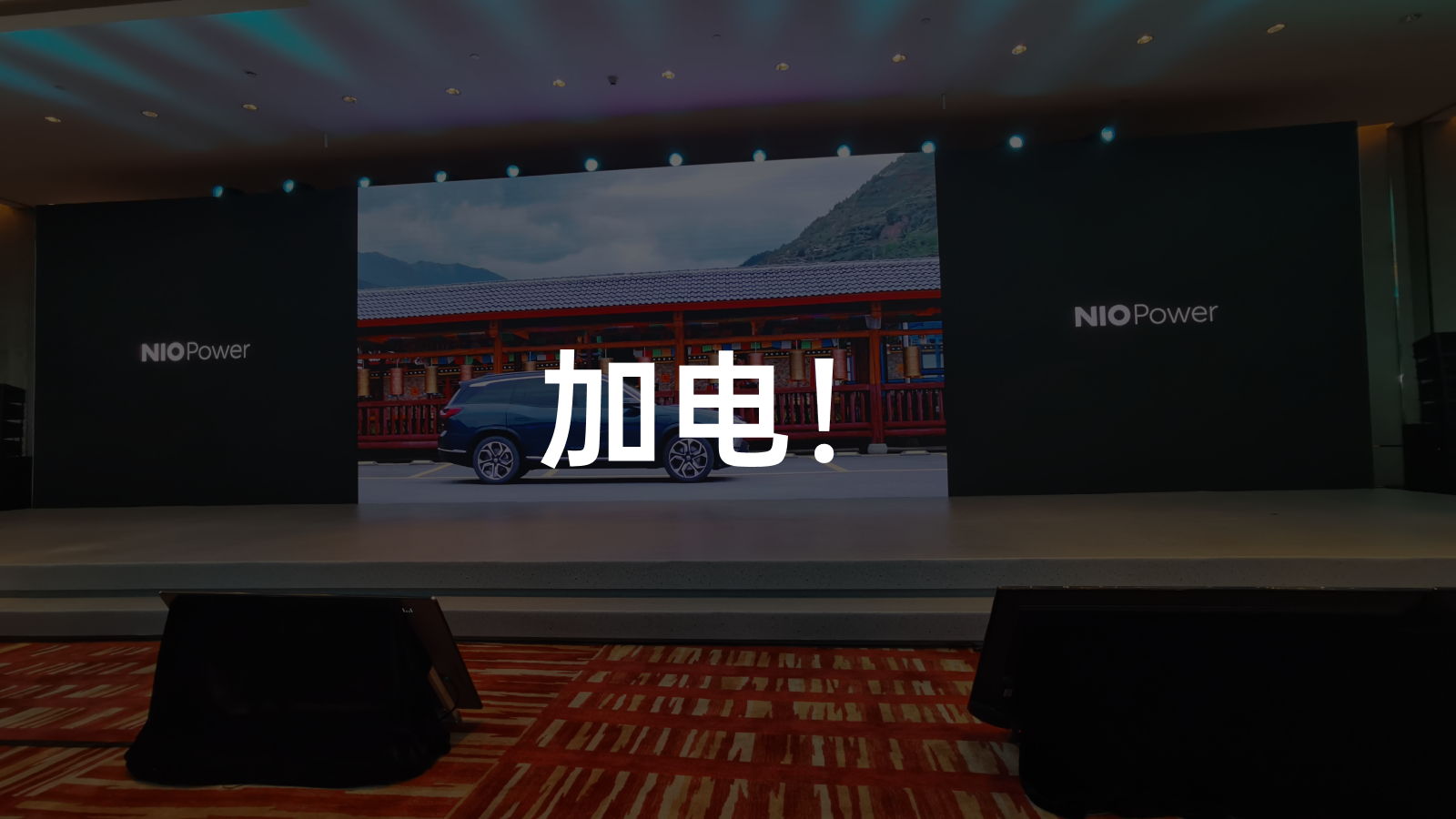Yesterday evening, I drove my NIO to participate in the NIO Power Day event at Dishui Lake. After checking in at the hotel, I went to the nearby second-generation battery swap station to swap out the battery. Back in my room, lying on the bed, I began to reflect on my experience as a user of the NIO electric vehicle for the past year, as someone who doesn’t have a personal charging station and can’t afford the Energy as a Service plan. I think the phrase “no pain, no gain” can be used to describe my experience. From the initial pick-up when the closest battery swap station was the Automobile Exhibition Park Station 18 kilometers away from my home, to the San Noa Station around 5 kilometers away, and now to the permanent Hengjiuyi Cheng Station only 300 meters from where I live- according to the naming convention used by the NIO community, I have “purchased” a set of “electric zone housing.” From another perspective, I have personally experienced the development of NIO Power in the past year.
To this day, the issue of replenishing power remains a primary concern for those who focus on and purchase electric vehicles, but this problem will eventually be solved. Of course, in addition to the basic infrastructure construction carried out by third-party operators such as State Grid and Teld, as well as Star Charging, I believe that vehicle manufacturers should also actively participate because this is the basis for increasing market share.
In this regard, Tesla and NIO should be considered good role models for the industry. So, what is NIO going to do at the NIO Power Day event today? Let’s take a look back.
Refueling is more important than endurance
Recently, there have been reports on the Internet that NIO is going to establish a new brand and launch the Gemini model next year, in addition to the virtually certain release of the ET5 model in my eyes. Thus, I think the NIO Day event this year will certainly be full of information. So, does NIO Power Day plan to launch the third-generation battery swap station or new high-power charging piles?
In fact, what I was expecting didn’t happen. Looking at the entire event, in my view, it was more like NIO presenting NIO Power to the public and having a “sales” meeting.
“Solving the problem of mileage and charging anxiety in electric vehicles requires a good service system that satisfies users’ different needs in different scenarios, and this system must be based on an analysis of user scenarios,” Qin Lihong introduced the underlying concept behind the establishment of NIO Power. To put it simply, I think their goal is to achieve “seamless” refueling.
The issue of refueling scenarios involves two factors: location and time. According to the data released by NIO, the proportion of urban use is around 60%, while suburban and rural use represents around 30% and 6% respectively, and about 4% involves intercity travel, with most driving distances ranging from 200-400 kilometers.Translate the following Markdown Chinese text into English Markdown text, in a professional manner, while retaining the HTML tags inside Markdown and only outputting the result.

After that, divide it into 0.5-1 hour, 1-2 hours, 2-4 hours, and above 4 hours according to the expected duration. The reason for doing this is mainly because if we cross the two axes, we will find that most people who have been using electric vehicles for a long time can easily calculate the scenario.

Then, based on the calculation of the input-output ratio, match the corresponding energy replenishment resources. This is the deployment planning of NIO Power. Of course, I think that this set of calculation rules is not difficult and there is no threshold. The difficulty lies in the continuous investment of car companies and richer energy replenishment measures to cope with different user scenarios. Therefore, NIO Power’s solution is “cars, charging poles, stations, personnel, and cloud-based big data.”
In short, it includes mobile charging cars, charging poles, battery swap stations, charging personnel, and cloud-based big data. Here, I want to briefly mention the “milk tanker” that once caused a sensation in the early days of the Internet.
Because the previous version of ES8 used to “burn 35-40 liters of diesel fuel per 100 kilometers” in history, this was a significant negative factor for many people. But to be frank, this was a significant factor that motivated me to delve into NIO. It needs to be clarified that it is not that I think this electric vehicle is cool, but it surprises me that in the commercial world, there will be a car company that does user service at such great cost. This made me a little confused when I had just finished tearing apart the 4S store.
Of course, in addition to bringing huge network traffic to NIO in the early stage, mobile charging cars also provided the necessary energy replenishment needs for many users in relatively extreme scenarios.
Is Your Home In an Electric Region?
Of course, in addition to mobile charging cars, the more distinctive energy replenishment measure in the NIO Power system is the swap station, which has accumulated nearly 3 million swaps and a total energy replenishment of over 130 million kWh so far. NIO Power Vice President “Straightforward Boy” Shen Fei shared the story behind the swap station with us.
Shen Fei mentioned that the original idea of the swap station was to build a large swap station in the east, west, south, and north corners of a city, with 2,000-3,000 batteries installed. During the day, the main task was to recycle empty batteries, and the batteries were fully charged with valley electricity at night and then distributed to every corner of the city the next day. Of course, thanks to the invention of computers, they abandoned this idea after cost calculations.Following the decentralization and distribution ideas conveyed in the book “The End of Control”, NIO quickly adjusted its battery swapping stations to smaller and more compact models, resulting in lower investment costs and better matching the pace of startup companies. However, such pursuit of compactness caused the first-generation battery swapping stations unable to increase their operational capabilities by adding battery reserves, which resulted in a significant loss for NIO during the winter last year when the number of car owners surged. This was due to the increased demand for battery swapping caused by the low-temperature effect on the vehicle’s range, and the slower charging efficiency caused by low temperature.
During last winter, large numbers of NIO car owners in Beijing and Shanghai experienced long queues at battery swapping stations, particularly on rainy days or at times of low temperature coupled with rain, which led to a poor user experience. As a result, when designing the second-generation battery swapping stations, NIO increased the battery reserve limit to 13 units, and introduced a function for automatic parking in order to realize the user’s demand for not having to get out of the car for battery swapping. In fact, part of the driving force behind NIO’s power development came from user feedback.
As a straight-talking person, Shen Fei also mentioned the problem of battery swapping station failure rates, which is of particular concern to NIO users. He believes that with over 10,000 battery swaps per day and long periods of operation, mechanical failures are unavoidable. At present, the battery swapping process takes about three minutes, and therefore the next focus is on improving the reliability of battery swapping stations to reduce failure rates. As someone who was once “forced” to walk for half an hour in the Auto Expo Park, I would like to say that I really don’t want to visit the park again!
In addition, Shen Fei also shared his views on whether battery swapping is for commercial or consumer markets. He believes that scaling up in the commercial market is undoubtedly faster, but there is a greater need for battery swapping in the consumer market for several reasons such as the fact that a large portion of the population does not have a fixed parking space, and private cars tend to travel further and operate longer.
Based on this background, they first chose a more reliable bolt structure that ensures longer usage time and a secure structure. Second, the battery swapping station location must be close to the user. For this purpose, NIO has introduced a new definition for its invention of the new term “Electric District House” that refers to houses within 3 kilometers of a battery swapping station. As of today, approximately 29% of users live in Electric District Houses.
Finally, Shen Fei set a small goal, aiming for 90% of NIO users to live in Electric District Houses by 2025.Of course, there is actually a little story to share. At the launch ceremony of the first second-generation charging station in Beijing, the live streaming supplier suggested to NIO to use pre-recorded video to avoid the risk of technical malfunctions during the live broadcast.
However, this suggestion was rejected by NIO, reportedly because it “did not align with their values”. As the supplier predicted, there was indeed a minor incident during the live broadcast when a small car stalled, causing a 6-7 minute delay in the total time required for the charging process. Despite this, the incident was resolved without any major issues.
However, I believe that this incident was just a prelude to NIO’s true goals.
In addition to their energy infrastructure for charging stations, NIO also emphasized their cloud-based services, such as using big data to predict energy demand for charging and monitoring the battery systems of individual cars in real time for early warnings of potential problems. However, I believe this is not the most significant aspect of their presentation.
As I mentioned earlier, the NIO Power Day event is not only a presentation, but also a sales conference. To understand this better, please refer to the image below.

This was probably the first time that NIO officially announced that NIO Power and its BaaS (Battery as a Service) are not only aimed at consumers (B2C) but also at other companies (B2B), which was also mentioned briefly by Li Bin at the launch of the first second-generation charging station.
Li Bin and Qin Lihong also mentioned more than once that “we have been discussing shared charging stations with our friendly competitors for several years”. However, from the current situation, I am sure that these discussions have probably not been very productive. Therefore, by raising the issue at this event, NIO is probably hoping to raise awareness of their initiative through the media.
To be objective, I think it would be a difficult decision for other automakers to cooperate with NIO Power, and not just because of the costs involved in retrofitting their cars with NIO’s charging infrastructure. If there were other automakers that were willing to cooperate, but were constrained by their car design structure, I believe that NIO could help them improve by sharing their own design drawings.
From current situation, Ford has discussed shared use of NIO Power’s ultra-fast chargers and XPeng has purchased NIO’s on-demand pickup and delivery service as well as its tire maintenance service, both of which are relatively marginal services within NIO’s package of Energy and Service solutions. There may be cost considerations involved here, but ultimately, I think that there may be some concern about the “you make money from my investment, but I help you expand your scale” effect.In the short term, collaborating with NIO Power for battery swapping stations can save car manufacturers a large amount of capital for basic infrastructure construction, and enable their brand users to have a better charging experience, which is undoubtedly a positive development for the sales side. As Qin Lihong mentioned, the number of battery swapping stations has doubled since the beginning of the year at the year-end service areas on highways. This may help car manufacturers to increase sales volume and achieve a certain scale.
However, such cooperation does create concerns about being “kidnapped” by NIO. If fast charging with high power becomes the mainstream method for recharging in the future, the commercial value of battery swapping will considerably decrease, as Qin Lihong stated, “if that’s the case, I can just dismantle the battery swapping stations and replace them all with supercharging stations. After all, we have both the capacity and the site.” Therefore, the impact on everyone seems controllable, and it is only a matter of time to solve the problem of user charging pain points in the current few years, achieving volume, gaining a certain scale, and turning car manufacturers into helpers in NIO’s battle for battery capacity. The cooperating car manufacturers need to consider the cost of collaborating with NIO for battery swapping stations and whether it can be covered by profit generated by producing some differentiated products.
However, it is concerning that if battery swapping remains an important recharge method for a long time in the future, it will enhance the anxiety of collaborating car manufacturers. After all, if they collaborate with NIO, it means that their products must be somewhat differentiated from NIO’s models, which makes them relatively passive in product planning. Secondly, this kind of cooperation is hard to qualify as equal when viewed by objective observers.
However, I believe that NIO also realizes that relying solely on NIO Power may not be attractive enough to car manufacturers. This time, they proactively mentioned opening BaaS to car manufacturers as well. Although I still cannot fully accept the purchasing logic of BaaS, Li Bin mentioned that more than 50% of NIO’s users have adopted BaaS during their financial report call, which indicates that reducing the threshold for car purchase still has a significant appeal to consumers.
In conclusion, in the short term, collaborating with NIO Power for battery swapping stations is all benefit, but in the long run, the risks are uncertain.
At last
After the live broadcast, there was also a QA session, during which NIO’s public relations director, Ma Lin, mentioned the similarity between building battery swapping stations and JD.com’s self-built logistics. I can speak a little about JD.com’s logistics strategy since I used to work for JD’s “brother”, Dong Mingzhu.
When JD.com decided to build its own logistics, it encountered strong opposition from the company internally, the media, and the investment market. After all, the investment was substantial, and at that time, everyone advocated for light asset operations. However, JD.com found a unique path despite the doubts and criticisms.
In earlier interviews with the media, Liu Qiangdong repeatedly stated that “So what if we burn money? Haven’t we created any value or experience?”. From a current perspective, JD’s self-built logistics system has indeed become one of the company’s core competencies.On the fifth anniversary of JD.com’s veteran employee day last year, Liu Qiangdong praised the logistics system again in an internal email, and emphasized the correctness of adhering to self-built logistics system back then. He stated that “a product or service that cannot solve industry pain points has no commercial value and will be the first pig to drop after the wind has passed.“
Now looking back at NIO Power, I believe they are on the right track in solving industry pain points.
This article is a translation by ChatGPT of a Chinese report from 42HOW. If you have any questions about it, please email bd@42how.com.
